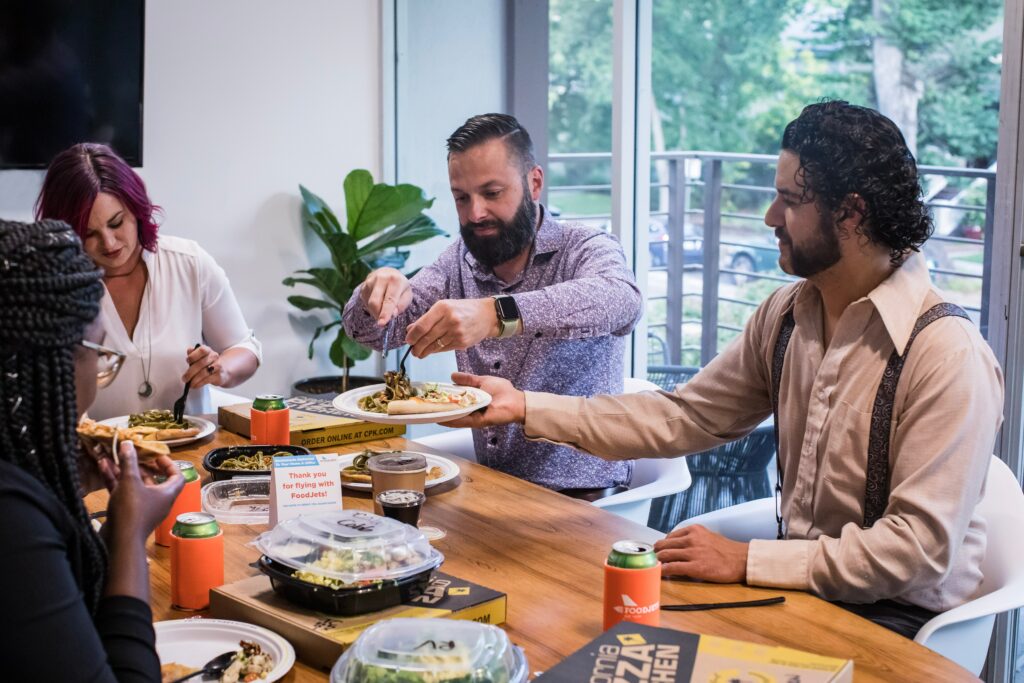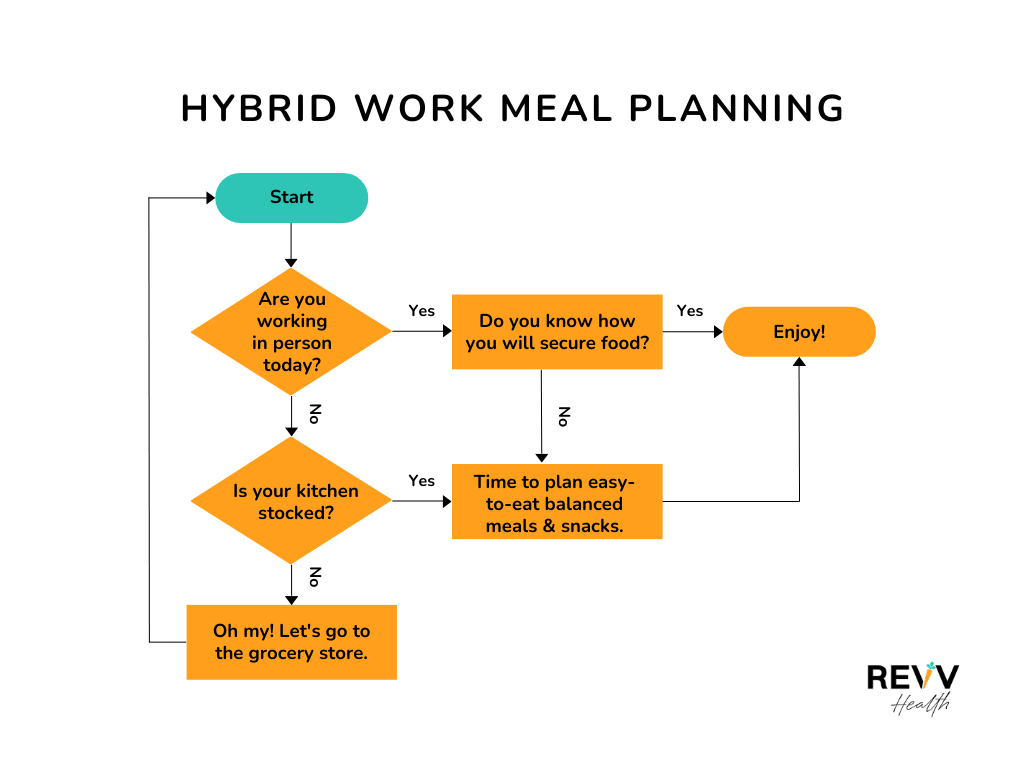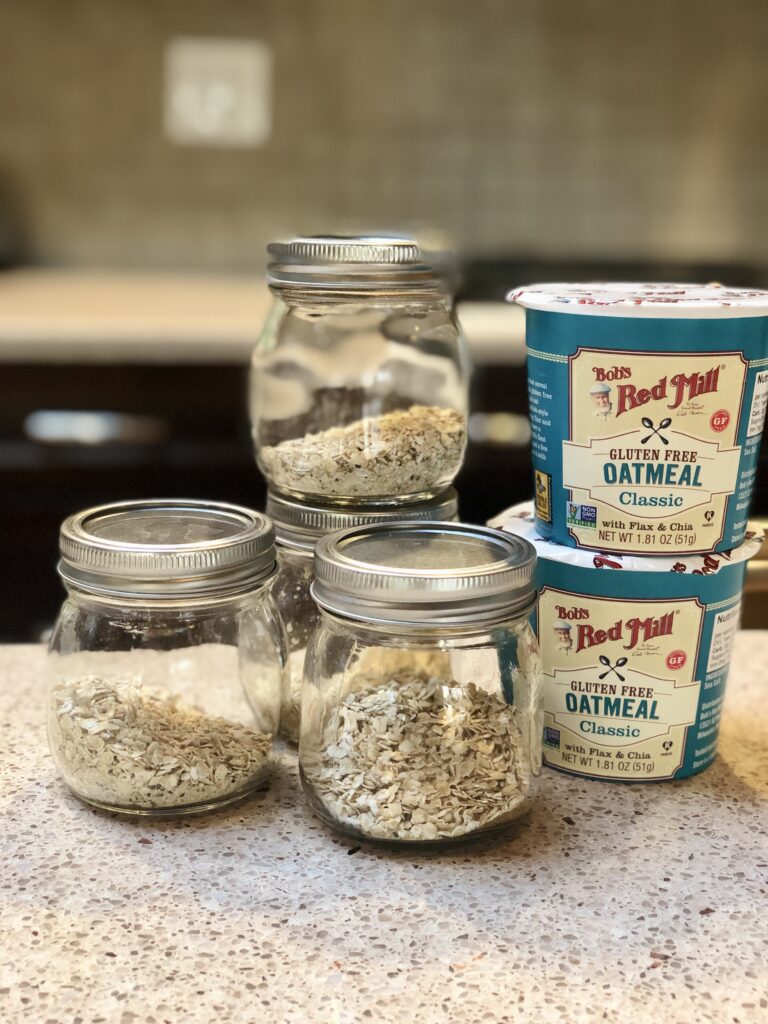If you are currently employed, you are someone who is working in one of the following three environments: 100% in-person, 100% virtual or a mix between the two, which is considered a hybrid work schedule. When it comes to hybrid work schedules, it can be tough to maintain a healthy diet with the changing scenery. Here are some go-to, smart nutrition strategies.
The Challenges of Eating Well with a Hybrid Work Schedule
While working a flex sched is totally “cowabunga, dude,” there is a true impact on eating habits with hybrid work.
For one, eating patterns and routines are not the same every day. Irregular mealtimes and the disruption of having a solid daily routine could create a reliance on grazing, stress or mindless eating due to the transition between work environments.
Various factors can influence this, which include anything from not having enough food in either environment, not having enough variety, and not being prepared with options that are enjoyable.
Another consideration is the social impact. At home, there might not be a social element involved in your eating schedule, whereas work lunches or office food might play a role in your decision-making process.
The Foundations of a Healthy Diet for Hybrid Work Schedules
There are a few key components of ensuring that your workday is nutritionally sound.
Adequate Food
Is there enough food at home or at work to satisfy hunger needs? Do you need to be sure your kitchen is well-stocked each week to ensure the bare minimum? Is there a way to purchase food at work easily, or do you need to come prepared with food from home?
Balanced Diet
It goes without saying that even if you have enough food at home or at work, you’ll be pretty hungry if all you have access to is one of the three macronutrients (carbohydrates, proteins, and fats).
Ideally, you are balancing the three throughout the day, and even pairing these macronutrients with one another to ensure satiety and a balance of nutrients are met.
Enjoyable Food
Are you going about your day like a robot eating fuel when needed, and not caring about how much you enjoy your meals and snacks? This might seem like a smart plan to start, since anyone can follow anything for a short period of time that they don’t love, but in the long run, you’ll set yourself up for feeling unhappy and unfulfilled with your choices. This alone can lead to other types of behaviors, such as overeating on foods you do love, or bingeing on them if they are highly restricted.
Hydration
Hydration impacts cognition. (source)
It’s a recipe for failure if you’re trying to focus and be productive. When you have a hybrid work schedule, chances are your hydration status is affected. Do you have an easier time remembering to drink at home than at the office? Do you have better access to fluids at home than at the office? Or is it flipped?
Meal Planning for Hybrid Work Schedules
The advantages of meal planning for busy professionals and working parents are endless when it comes to your standard workweek but becomes even more important when you’re juggling two different environments from which to operate.
How to plan meals considering office and remote days
Below is a quick flow, in expansion to the above image, on how to plan meals when balancing a hybrid workweek.
1. ASSESSMENT
Each week, assess your schedule and meal needs. Whether or not you have a hybrid work schedule, but especially if you do, this process of weekly assessment helps identify which days you will spend in the office versus remote.
Consider your commute time and duration of office hours to help plan for meals and snacks away from home. Don’t forget to take into account any meetings or events that might impact mealtimes and your availability.
2. BATCH COOK
On your weekend or days off, prepare large quantities of grains like rice or oatmeal, pasta or bread products, protein like nut butters, poultry, deli meats, and tuna salads, and vegetables that can be used for multiple meals, like salad, roasted veggies to reheat, or raw to slice up for sides.
- For office days: pre-portion and pack lunches and snacks to take to work
- For remote workdays: have a pre-prepped meal ready for quick heating and eating
Designing Balanced Meals
Divide your plate into sections for veggies, protein and carbs/grains. Using MyPlate by the USDA or the Healthy Eating Plate by Harvard (similar if not identical to the USDA) is a great way to start when creating portions.
- For office days: try a mason jar salad or grain bowl with quinoa or rice, grilled chicken and a side of fruit or handful of nuts. Head over to my resources page for mason jar containers that I recommend and on-the-go adult bento boxes.
- For remote workdays: you can make your own salad bar or try leftovers and pair them with the missing macronutrient.
Portability and Office-Friendly Meals
Not on my resources page, but should be, is the PackIt lunch box that has built-in insulation to keep items cold. If you’re heating food up, try the glass bento box that I have listed in my resources section. This double as a great container for at home lunches, as well, that you can easily heat in your microwave, oven or large toaster oven.
Some examples of easy-to-carry meals that don’t require additional reheating or cooking at work:
- Sandwiches or wraps with lean protein and a raw side of fruits and veggies
- Mason jar salads as mentioned above, layered with veggies, protein and dressing at the bottom
- Overnight oats with fruit and nuts or a quick oatmeal cup that only requires boiled water
Food Safety
When at the office, I suggest being mindful food safety, and ensure that your food is property stored with ice-packs (only until the lunch hour) and then placed into a fridge unless the remainder of your items are non-perishable.
Wash your hands and practice proper hygiene before eating!
Some great food safety tips that I recommend can be found here on the CDC’s website.
Flexibility
Regardless of where you are working, having a flexible and adaptable meals system is vital to accommodate unexpected changes to the workday.
As an example, did a meeting just pop up on your calendar where you blocked off time for lunch? No problem when you have back-up meals and snacks and a flexible mindset. If you cannot move the meeting, try checking out my tips about keeping a stock of non-perishable healthy snacks in the office or at home for backup options.
If you are overly strict with your meals, you will miss out on key opportunities to feed yourself when these situations arise, which can set you up for some serious grazing later on.
By incorporating these meal planning strategies into a routine, your hybrid work schedule can be nutritious and balanced on both office and remote workdays.
Final notes
Planning ahead and considering your unique situation and aspects of each work setting will contribute to maintaining a healthy diet and overall well-being in the face of changing work environments.
If you need help making smart food choices and changing your eating habits, see if we are a good fit by scheduling your free call – on the call we will discuss your current concerns and I will offer a few tips that can help you begin to reach your nutritional goals.






0 Comments